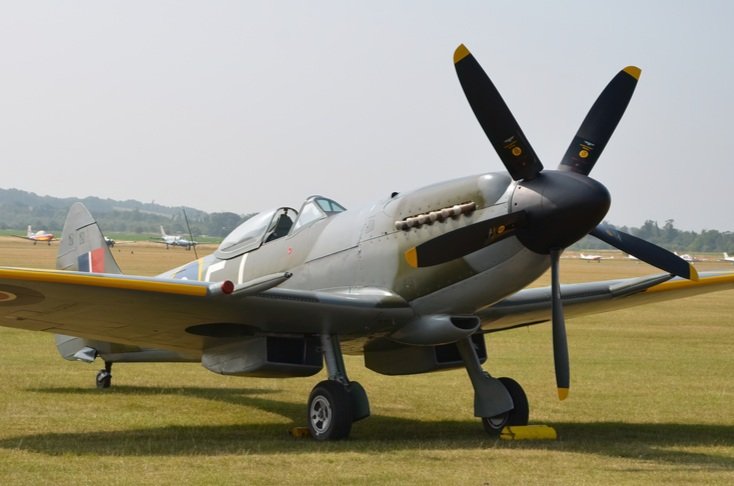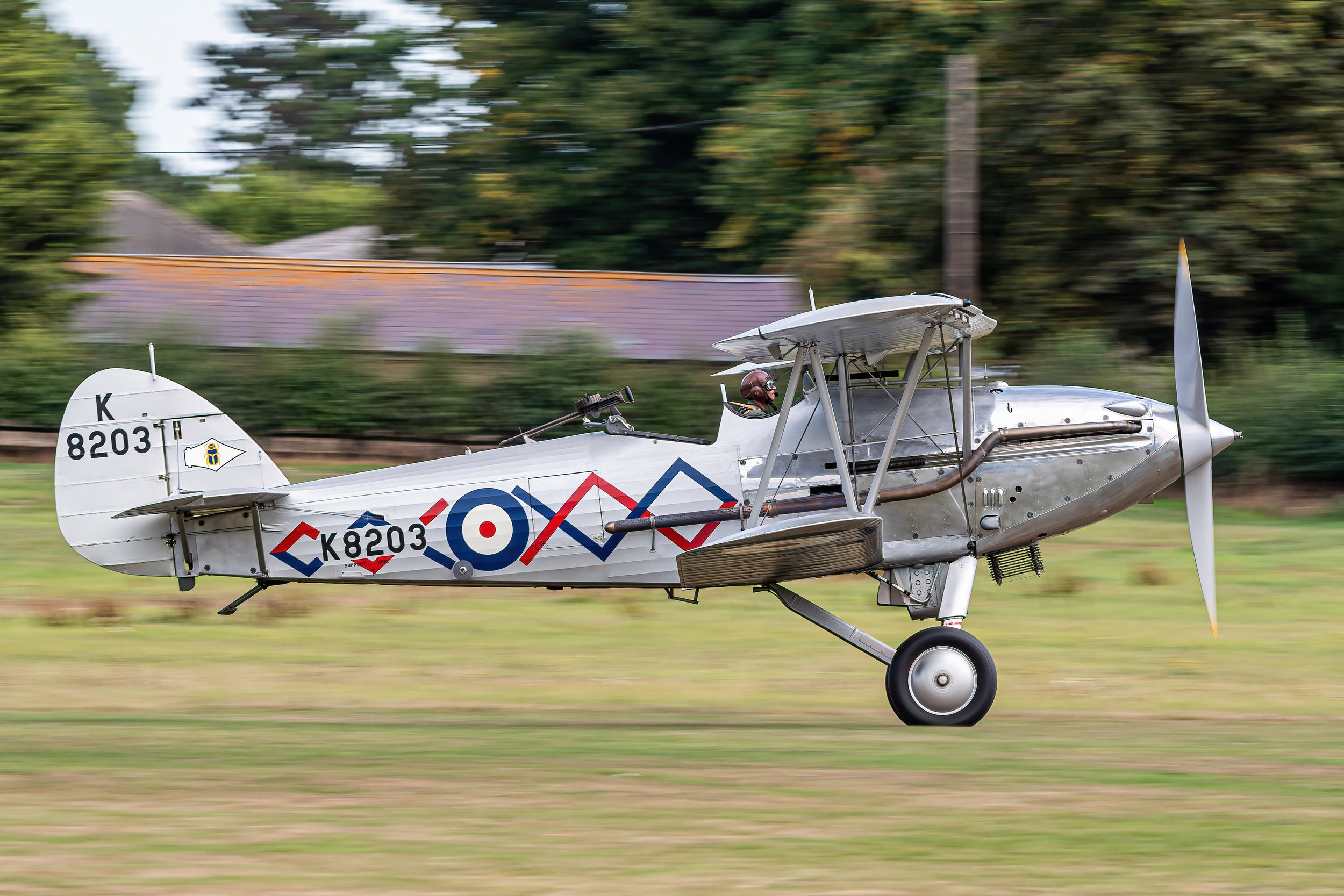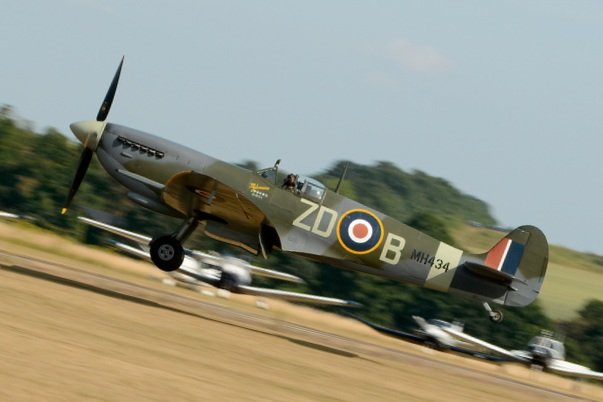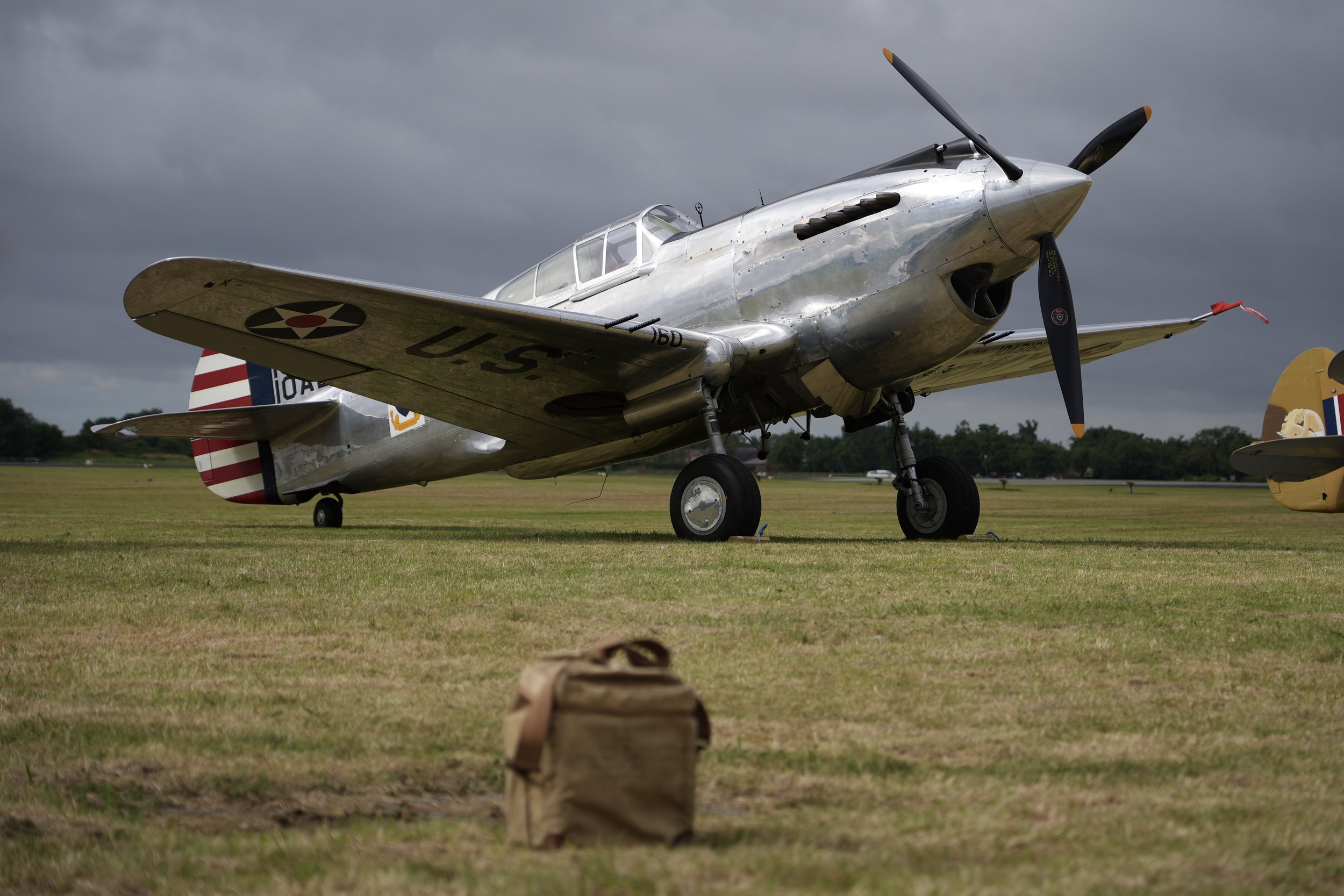Spitfire G-PRXI
Year built
1944
Aircraft
Base
Duxford Airfield
The Spitfire PR.XI is a rare aircraft that was designed to perform high-altitude and long-distance photographic operations. It is famous for being used to take the initial images following the 'Dambusters' raid, which were used to assess the extent of the damage caused to the dams. The aircraft was stripped of its armament and fitted with additional fuel tanks to allow for longer flights. The pilots who flew the aircraft endured extreme conditions in the unpressurized cockpit.
The aircraft first took flight in October 1944 and was primarily used for taking photographs across Europe as part of 4 Squadron. After the end of the war, the Spitfires were no longer required and were, therefore, either scrapped or sold off. However, this particular airframe was gifted to Livingstone Satterthwaite, the American Air Attaché at the time, for use as his personal transport. The aircraft was still painted in its original 'PR Blue' colour scheme, but the military identity was removed and replaced with an American civil registration. The famous Air Transport Auxiliary pilot Lettice Curtis was invited to fly the Spitfire in a number of civilian air races, and in 1948, she broke the National 100km close-circuit record by recording an average speed of 313.07mph.
The aircraft was returned to the Vickers Armstrong factory in late 1950 and was later donated to the Shuttleworth Collection at Old Warden, Bedfordshire. It was displayed there for 25 years, mostly on static display outside, until it was moved to Duxford for restoration back to flying condition. Before completion, the airplane was sold at auction to French collector and pilot Roland Frassinet. The Spitfire flew again from East Midlands Airport in 1984 when Trent Aero had completed the rebuild. Three years later, it was acquired by warbird collector Doug Arnold and had a leading role in the TV series 'Piece of Cake', which depicted an early-mark Spitfire deployed to France towards the start of WWII. Upon Arnold's death in 1992, the aircraft was stored until it re-emerged in 1999 with a new owner, Justin Fleming.
The Aircraft Restoration Company acquired the airframe some years later and commissioned a full rebuild. At this point, it regained the PR.XI 'wrap-around' Perspex windscreen - removed some years earlier - and the aircraft's factory original Rolls-Royce Merlin 70 engine was tracked down, overhauled, and re-fitted. G-PRXI flew again in 2018, adorned in the authentic 'PR blue' livery, which was so effective at camouflaging the aircraft at height. Lettice Curtis's distinctive signature was reproduced in white paint next to the cockpit as a tribute to her and all other ATA pilots active throughout that era. The restoration team affectionately nicknamed this wonderful machine 'Eleven' or 'L' in honour of Lettice Curtis, and it has since become a famous symbol of British aviation history.
In 2020, the aircraft required a test flight after undergoing maintenance work. John Romain, a test pilot, arranged the flight to coincide with the 'Clap for Carers' initiative, which was ongoing amidst the COVID-19 pandemic. He flew the aircraft around local villages to raise morale during a challenging time for many. Following positive feedback, this was repeated again - this time with the words 'THANK U NHS' painted in large white lettering underneath the wings. The fuselage began to be adorned with the names of those nominated by their loved ones in return for a donation. The tail feathers of the 'NHS Spitfire' were soon a sea of names, and the project raised over £130,000 for the 'NHS Charities Together'. As restrictions eased, John flew this now iconic symbol of hope over some 255 hospitals across England, Scotland, Wales, and Northern Ireland to spread the aircraft's message of thanks to those it represented. This non-combat variant of the Spitfire was the perfect machine for the NHS project, having carried cameras rather than weapons during active service.
| Back to Top |
Supermarine Spitfire PR.XI
The Supermarine Spitfire was a highly successful British single-seat fighter aircraft utilized by the Royal Air Force, and other Allied countries before, during, and after World War II. The Spitfire was a versatile aircraft with many variants that were produced in greater numbers than any other British aircraft. It was also the only British fighter produced continuously throughout the war. Today, the Spitfire remains popular among enthusiasts, with nearly 60 airworthy examples and many more on display in aviation museums around the world.
The Spitfire was designed as a short-range, high-performance interceptor aircraft by R. J. Mitchell, the chief designer at Supermarine Aviation Works, a subsidiary of Vickers-Armstrong. Mitchell used cutting-edge technology to create the Spitfire's distinctive elliptical wing with sunken rivets (designed by Beverley Shenstone) to have the thinnest possible cross-section, giving the aircraft a higher top speed than several contemporary fighters, including the Hawker Hurricane. Mitchell continued to refine the design until his death in 1937, after which his colleague Joseph Smith took over as chief designer and oversaw the Spitfire's development through its numerous variants.
During the Battle of Britain in 1940, the Spitfire played a crucial role in the defense of Britain. Although the more numerous Hurricane shouldered a greater proportion of the burden against Germany's air force, the Luftwaffe, the Spitfire's higher performance allowed it to achieve a lower attrition rate and a higher victory-to-loss ratio than those flying Hurricanes. During the battle, Spitfires were generally tasked with engaging Luftwaffe fighters, mainly Messerschmitt Bf 109E-series aircraft, which were a close match for them.
After the Battle of Britain, the Spitfire became the backbone of RAF Fighter Command, and it saw action in various theatres of war, including Europe, the Mediterranean, the Pacific, and South-East Asia. The Spitfire served in several roles, including interceptor, photo-reconnaissance, fighter-bomber, and trainer, and it continued to serve in these roles until the 1950s. The Seafire, a carrier-based adaptation of the Spitfire, served in the Fleet Air Arm from 1942 through to the mid-1950s.
Although the original airframe was designed to be powered by a Rolls-Royce Merlin engine producing 1,030 hp, it was strong enough and adaptable enough to use increasingly powerful Merlins and, in later marks, Rolls-Royce Griffon engines producing up to 2,340 hp. As a result, the Spitfire's performance and capabilities improved over the course of its service life.
The Spitfire MkV was one of the most successful 'stop-gaps' introduced into Royal Air Force service, with over 140 squadrons operating the type. The MkV served on all battlefronts and was supplied to nine other countries, including the Soviet Union and the United States.
During 1940, the Spitfire MkI and MkII barely maintained superiority over the Messerschmitt Bf109E, so the Air Staff began to consider a replacement. Their preferred successor was the MkIII, which was fitted with a Merlin XX engine and incorporated a new wing design. However, the MkIII never went into production due to problems with the Merlin XX.
Realizing that it would take time to tool up for a new production aircraft, the Air Ministry asked Rolls-Royce to install the Merlin 45 engine in the Spitfire MkI airframe as an interim measure. Between 1941 and 1943, over 6,500 of this MkV version were produced, making it the most numerous Spitfire variant. The Spitfire MkV incorporated some of the new design features intended for the MkIII.
By 1944, only five squadrons of Spitfires remained in service, but the aircraft continued to be used in various roles. Two Spitfire MkV squadrons provided gunfire direction on June 6, 1944, for naval units off the D-Day beaches of Normandy. The Spitfire's service life was long and varied, making it one of the most iconic aircraft of all time.
| Back to Top |
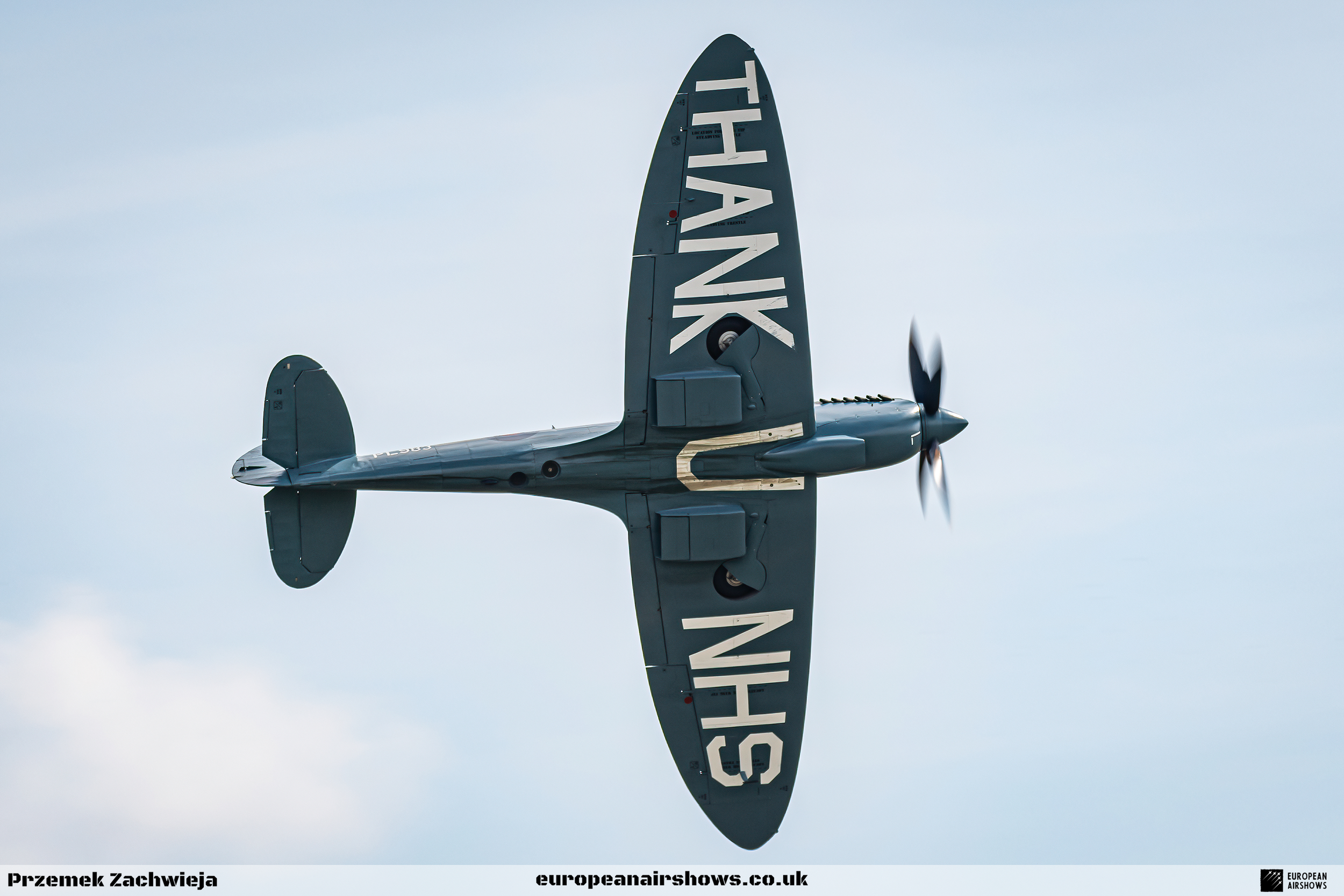
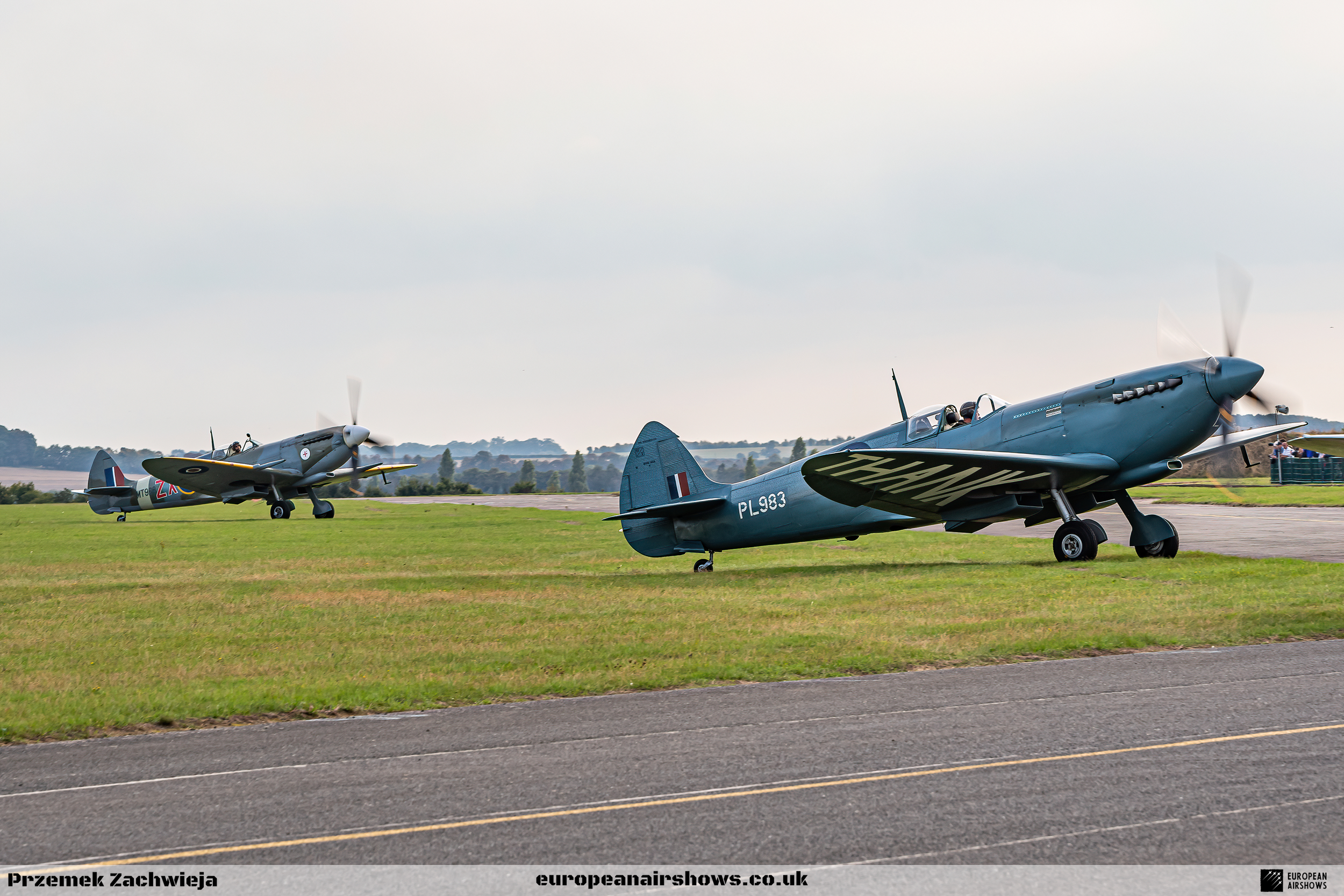

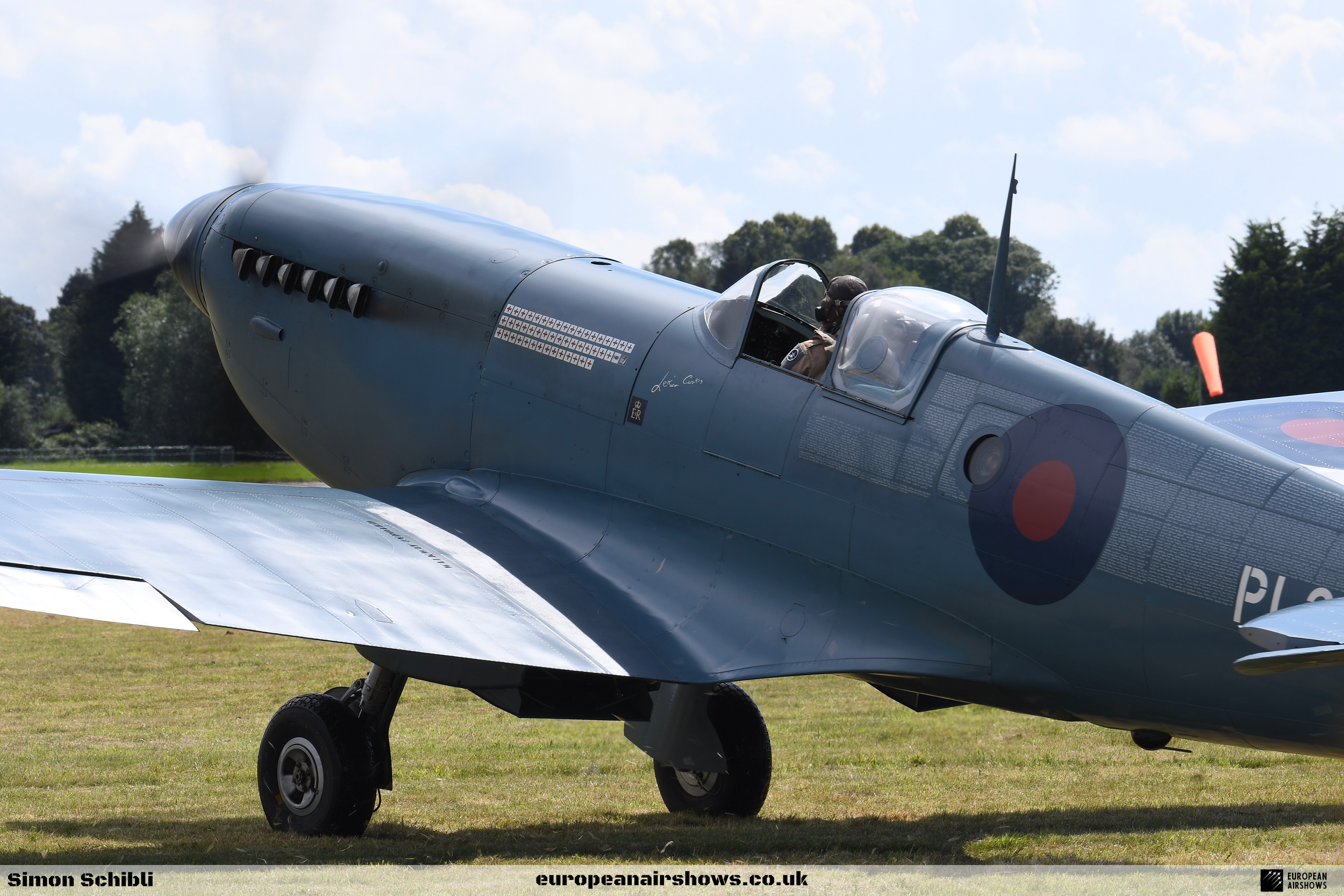
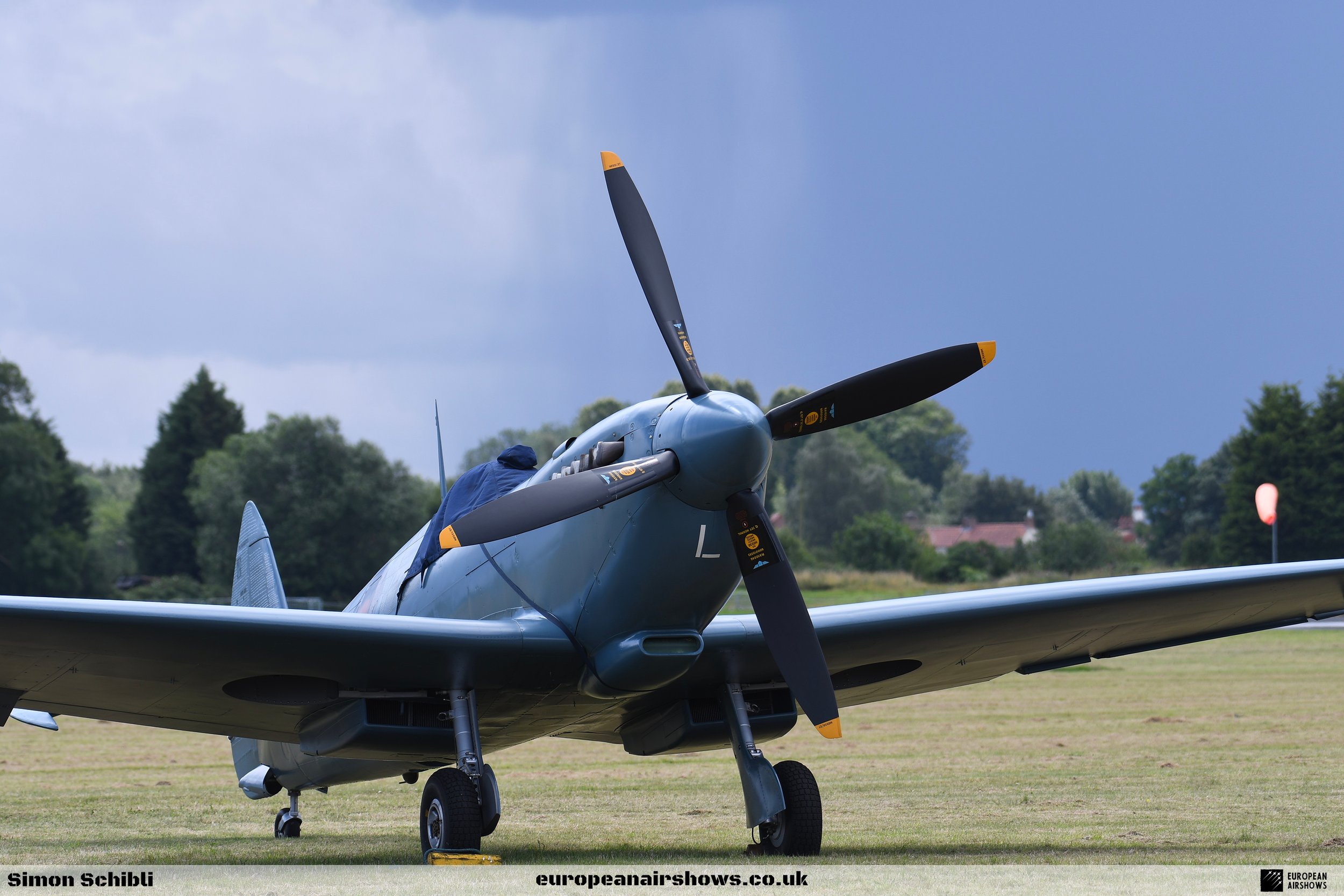
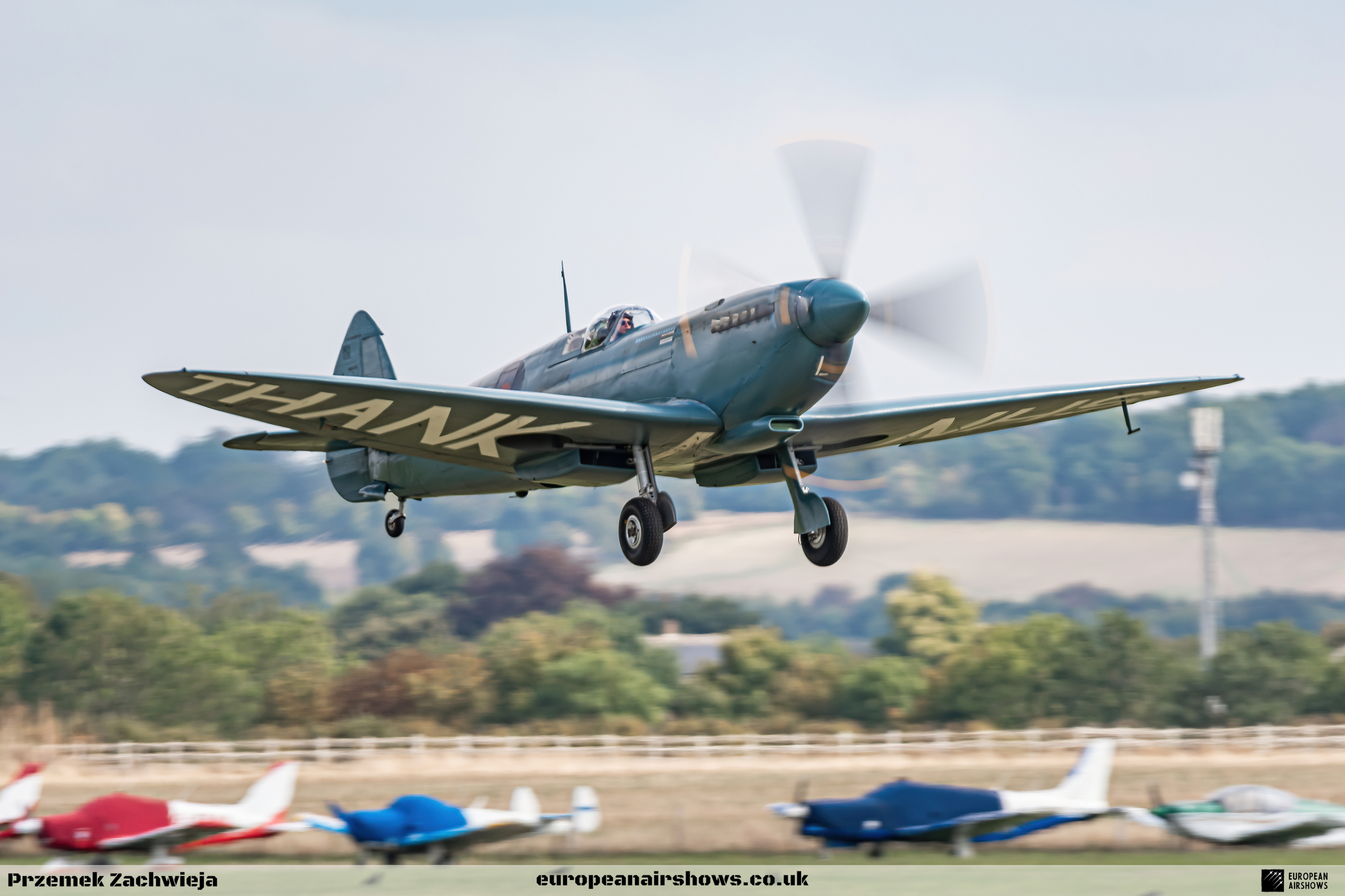

| Back to Top |






















